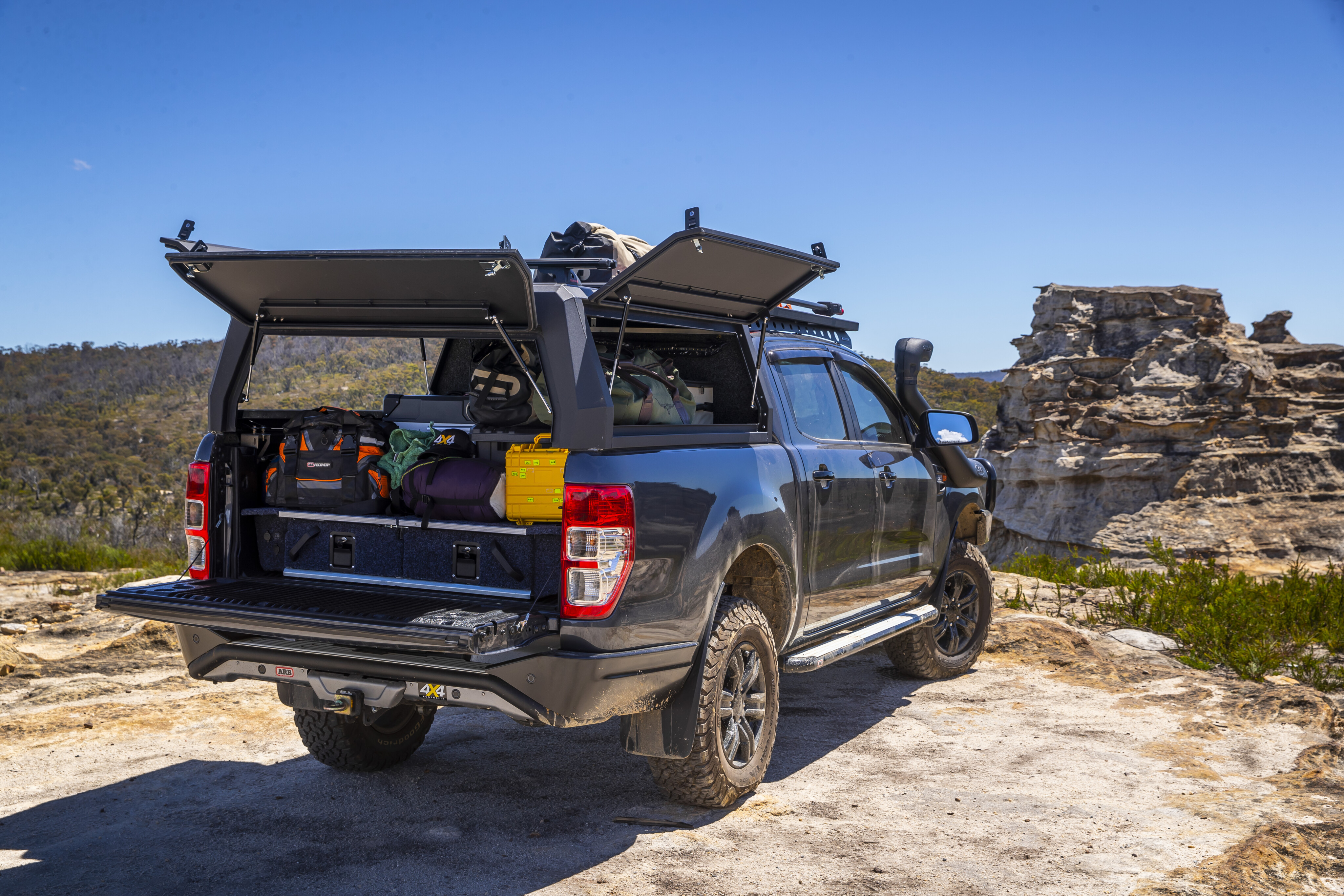
You have just purchased the four-wheel drive you have been dreaming about.
Now you can head to a 4WD shop and load up your rig with all the accessories that will help you in the adventures that lie ahead. Then it’s time to hook up the caravan and leave the hustle and bustle of your previous life behind, without a care in the world.
Or perhaps you’re a tradie with a life’s worth of tools in the back of the dual-cab ute, a rig that doubles as your young family’s adventure machine on weekends. But are you compromising your family’s safety by using an overloaded vehicle?
It’s all too easy to overload your rig with accessories and gear that, if an accident happens, may cause your insurance company to leave you high and dry and deny your claim.
In the words of bushcraft and survival expert Mors Kochanski: “The more you know, the less you carry.”
JUMP AHEAD
- Accessorising your 4WD
- LC200 vs BT-50
- Weight distribution
- Axle loading
- Towing considerations
- GVM upgrades
- Ready to roll
- Laws and penalties
- Defining terms
Upgrade your 4x4
Accessorising your 4WD
Prior to taking your new ride on its first big jaunt, it has become customary to head to a 4WD accessory shop and throw the whole cattle dog (and your credit card) at your new machine.
When selecting the necessary bullbar/winch combination, or which rear drawer set-up to install, does the weight of the accessories enter the decision-making process? It certainly should. For the same reasons Formula 1 racecar engineers consider weight and – perhaps more crucially – the placement of that weight, you should consider how the extra weight you’re placing on the vehicle affects overall weight and, importantly, whether it alters the 4x4’s handling.
To get the case study underway, we have chosen two popular 4x4s – Toyota’s 200 Series Land Cruiser and Mazda’s BT-50 (both MY16) – and added typical touring 4WD accessories. Let’s see how they stack up.
LC200 vs BT-50
| MODEL | LAND CRUISER 200 | BT-50 |
| Kerb weight | 2740kg | 2118kg |
| GVM | 3350kg | 3200kg |
| GCM | 6850kg | 6000kg |
| Towing capacity | 350/3500kg | 350/3500kg |
| Front axle load | 1630kg | 1480kg |
| Rear axle load | 1950kg | 1850kg |
Loaded with accessories
| EQUIPMENT | LAND CRUISER 200 | BT-50 |
| Bullbar/lights/winch | 100kg | 100kg |
| Roof rack | 50kg | 40kg |
| Canopy | N/A | 80kg |
| Hi-Lift/shovel | 20kg | 20kg |
| Rear bar dual carrier | 80kg | 80kg |
| Rear drawers | 40kg | 50kg |
| Fridge/slide | 80kg | 80kg |
| Long-range tank | 60kg | 50kg |
| Additional fuel | 135kg | 70kg |
| Accessory battery | 30kg | 30kg |
| Additional wheel | 15kg | 15kg |
| LT tyres | 55kg | 5.5kg |
| TOTAL ACCESSORIES | 665kg | 670kg |
| Kerb weight | 2740kg | 2118kg |
| GCM | 3405kg | 3200kg |
| GVM | 3350kg | -41.2kg |
| LOAD CAPACITY | +55kg | -412kg |
As you can see in the tables above, the LandCruiser is already overweight before you even start to pack the essential items like bacon and beer, or even passengers.
It is important not to underestimate how much extra stuff weighs. Extra weight is your enemy, and any way you can reduce the load (regardless of the GVM upgrade) the better. You will improve fuel economy, reduce maintenance loads, and give the vehicle and its occupants a fighting chance to better enjoy this great country.
For instance, if you go on two trips and something doesn’t get used, get rid of it – unless the piece of equipment is safety-related, such as a first-aid kit or a fire extinguisher.
Weight distribution
The next time you’re at a ten-pin bowling alley, grab a couple of the bowling balls – one for each hand – and spin around in a circle with your arms outstretched.
Then try the same thing with both bowling balls held close to your body. Not only will this provide a spectacle for onlookers, but you’ll now have a practical appreciation of the ‘moment of inertia’.
The further away the weight is from the axis of rotation, the harder it is to start and stop. It’s no different cornering in your accessorised 4WD, with most of the weight added to each end of your vehicle. Admittedly, a bullbar mounted between the front and back seats probably isn’t going to be of much use.
The same principle can be applied to 4WD LT (Light Truck) tyres. These tyres will not only be heavier in the sidewall construction, but also a lot thicker and heavier in the crown and shoulder. The added force required to accelerate and brake the additional weight will increase fuel consumption, brake pad and rotor wear, and decrease the service life of components such as wheel bearings.
Adding weight to each end of the vehicle will make a 4x4 pitch more under braking and acceleration, as well as amplify bodyroll. This can actually blow out your stopping distance under heavy braking, as the front brakes are being asked to handle more of the braking duties.
If you’re replacing one of the two tanks in your 4WD with a long-range tank, replace the tank located between the wheels first, as the added weight will have less effect on handling.

Don’t forget that increasing the height of the centre of gravity won’t help your on-road handling characteristics at all. It will increase bodyroll and extend stopping distances under heavy braking, due to pitching and the related load transfer to the front.
If you have the choice of a quality aluminium or a steel roof rack, the aluminium rack could save you up to 20kg, and when loading vehicles for extended outback touring, the roof rack isn’t the place for heavy items. I’ve seen more than 100 litres of fuel and spare tyres on roof racks. You certainly wouldn’t want to drive an off-camber track like that.
In most 4WDs, the majority of the added weight from accessories and load will be in the rear of the vehicle. In the case of the Toyota 200-series, there’s an additional 300kg with a full 180-litre long-range diesel tank, twin-wheel carrier and drawers! And that’s without a single can or bottle of your favourite tipple.

When a 4WD has additional weight bias to the rear, it will tend to oversteer. That’s when the rear tries to overtake the front, spinning you around. Most manufacturers design vehicles to be as neutral as possible, before understeering at the limit. Understeer is when the front runs wide, and all you have to do to get it back on line is get off the throttle a little. That’s a lot safer than trying to wrestle an overloaded tourer that looks like it has entered a drifting competition.
Another reason weight distribution is important is tyre load sensitivity. As the weight increases on a tyre, the co-efficient of friction starts to drop off. So, if the rear tyres are supporting more load, they will overload sooner than the front tyres when cornering (as the co-efficient of friction drops off). Before you know it, you’re looking at the same scenery through the windscreen that was in the rearview mirrors moments ago.
Axle loading
As well as an overall weight, vehicle manufacturers will specify an overall weight allowable for each axle. So even if your total weight is under the specified GVM, you may still be over the individual axle’s weight.
In the case of the LandCruiser 200, Toyota has specified a front axle load of 1630kg and a rear axle load of 1950kg, giving a total of 3580kg. This is 230kg over the Land Cruiser’s GVM of 3350kg, so it allows a little uneven loading of the axles without exceeding the GVM.
Towing considerations
If you didn’t think it was complicated enough, there are further considerations when towing.
Again, we’ll use the Land Cruiser as an example. If you add the maximum braked towing weight (3500kg) and the GVM (3350kg) together you get 6850kg, which happens to be the GCM (Gross Combined Mass). So at GVM, you’re able to tow the 4WD’s full rating of 3500kg. However, that’s not always the case.
Now, let’s do the sums on the Mazda. Just like the Land Cruiser, it has a braked towing capacity of 3500kg. With a GVM of 3200kg, it gives you a total weight of 6700kg. This is 700kg in excess of the Mazda’s GCM of 6000kg. So you’ll need to strip weight out of the vehicle or tow something lighter.
The Tow Ball Mass (TBM) also affects rear and front axle loads and GVM. When you’re towing 3500kg, with either the Mazda or the Toyota, if your TBM is 350kg you can add that weight directly onto the 4WD’s GVM.
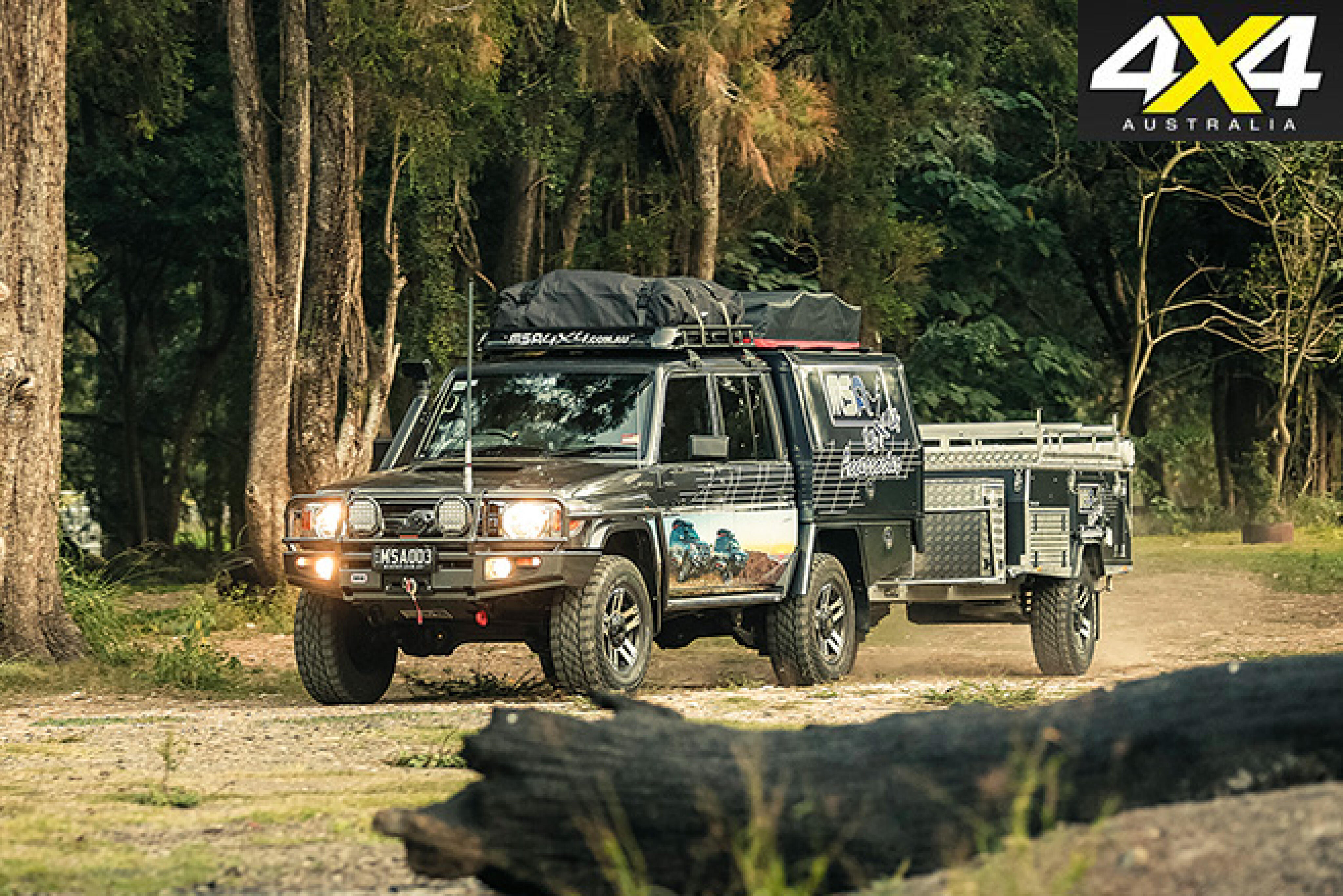
Moving onto axle loads: Imagine your 4WD as a seesaw – the bullbar is the far seat, the rear axle line is the pivot point, and the tow bar connection is the near seat. Placing a load on the near seat (tow bar) will pivot through the rear axle line and lift some of the weight off the front wheels. Using the Toyota as an example (wheelbase: 2850mm; overhang: 1300mm), let’s look at how much weight you’ll lift off the front of the car.
Additional rear axle load as a result of TBM = (overhang ÷ wheelbase) x TBM. So, in the case of the 200, with a TBM of 350kg you’ll experience a lifting force of 160kg on the front wheels and 510kg of rear axle load (350kg + 160kg). Now that’s a lot for any vehicle to carry.
For towing, it’s better to have a longer wheelbase with a shorter overhang. With less leverage, anything that disturbs the trailer will have less effect on the vehicle.
GVM upgrades
Before you give up and throw the keys in the bin, there is salvation in the form of a GVM upgrade.
In the case of the LandCruiser, you can install an upgrade that will lift the GVM from 3350kg to 3800kg, giving you a massive payload increase of 450kg. However, it’s not all beer and skittles. The GVM upgrade won’t affect the GCM. So in the case of the Land Cruiser, you’ll now only be able to tow a maximum of your GCM minus the GVM. In the case of the LC200 with a 3800kg GVM upgrade, that’s 3050kg (6850kg minus 3800kg) of towing capacity at the new upgraded GVM.
For new vehicles, it’s best to get your GVM upgrade installed before registration. The kit needs to be a “federal compliance kit” and, unfortunately for DIY types, a GVM upgrade kit needs to be fitted by an Approved Production Facility accredited by DOTARS.
Once the approved kit is fitted, and the compliance plate affixed to the vehicle along with a new tyre placard with revised axle capacities, you’ll be able to drive the car with its revised GVM. The GVM upgrade will be nationally recognised, so there won’t be any problems when it comes time to move the vehicle on.
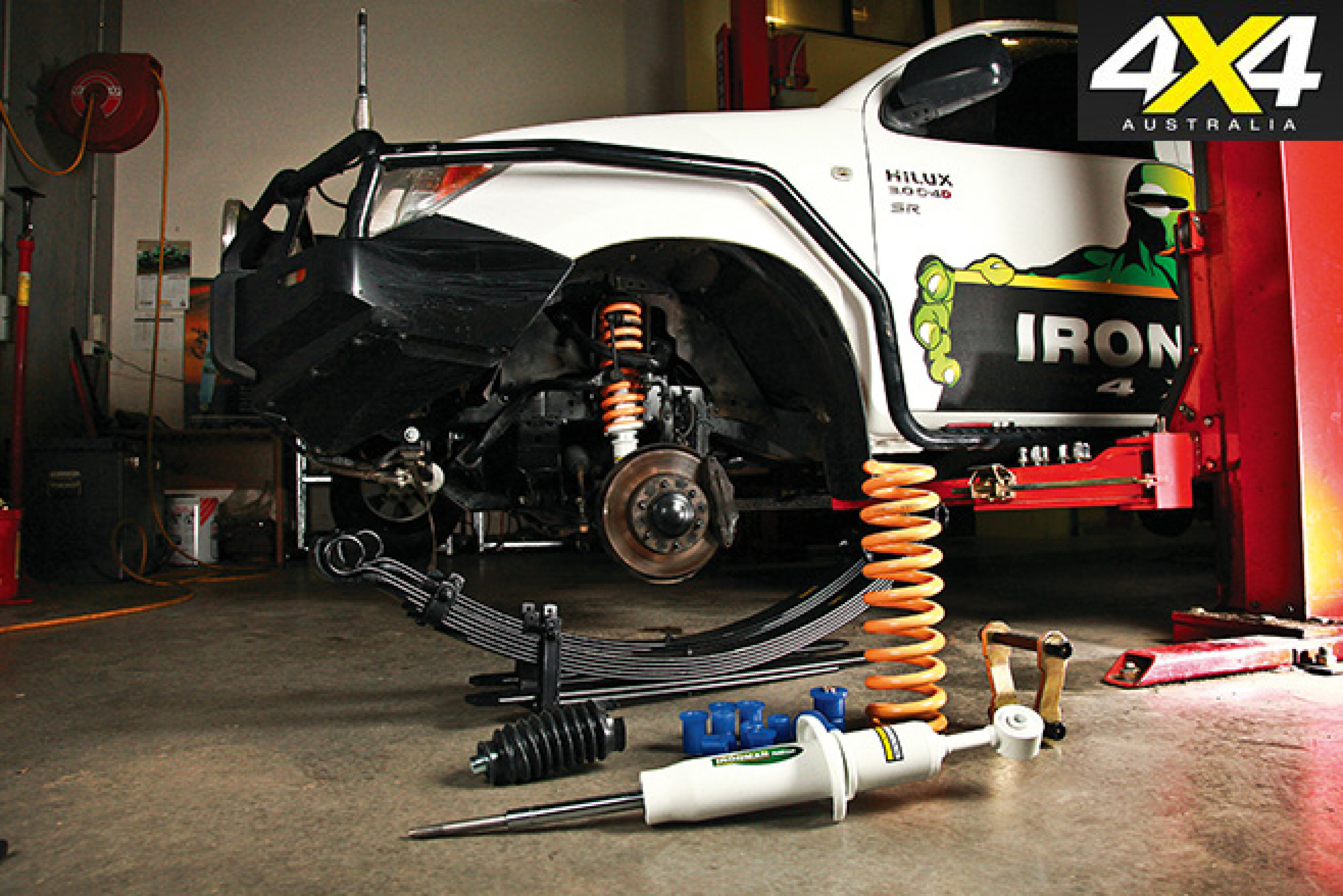
For a 4WD that has already been registered, you’ll need to have the vehicle signed off by an engineer (at additional expense) once the kit is fitted. Your 4WD with GVM upgrade will now be able to be driven nationwide. However, as the GVM upgrade is complied at a state level, when it comes time to sell, the upgrade is only recognised in the state where it was complied. If sold interstate, the new owner will need to have the kit recomplied with that state’s road authority.
In the case of the 200, the kit will include new heavy-duty coil springs front and rear, new shocks front and rear, the revised compliance plate, tyre placard, and a KDSS valve adjustment warning decal (where KDSS is fitted).
Nearly all 4WDs could use a little more underbody clearance, so giving your pride and joy a couple of inches of suspension lift at the same time as the GVM upgrade kills two birds with one stone.
Bear in mind, the GVM upgrade won’t make your 4WD invincible. You’ll still need to distribute the load correctly and remember that jumping sand dunes in the middle of the Simpson Desert will bend your chassis just as easily with or without the upgrade.
Ready to roll
Be mindful that the overall weight of your rig doesn’t exceed the 4WD’s GVM. Also try and keep the weight as low and as centrally located as possible – if you don’t want to throw handling out the window.
When towing, the tow ball mass will add to your GVM. The leverage created by the distance from the tow ball connection to the back axle will see increased rear axle loads above the tow ball mass and reduced loads on the front wheels that can affect braking and handling.
If you’re driving a wagon with a limited load capacity, a GVM upgrade could be in order. Just bear in mind this won’t increase the GCM and it could compromise the 4WD’s towing capacity.
Laws and penalties
As you have travelled this great sunburnt country, you’ve no doubt noticed the occasional weighbridge.
Their primary focus is heavy transport, but police and transport authorities have the ability to use this and portable equipment to check your rig for compliance.
There are no specific on-the-spot fines relating to overloaded 4WDs. However, a summons to appear before a magistrate could be imposed, where penalties include a $2000 fine or six months in jail.

Defining terms
Before we delve into the wonderful world of vehicle loading and how it affects legalities and a vehicle’s handling, it’s useful to understand the terms commonly used.
Tare weight
This is the vehicle’s weight with fluids, usually with only 10 litres of fuel in the tank.
Kerb weight
The weight of a rig when it’s ready to drive with full tank/s, an average driver of 68kg (they don’t frequent my souvlaki shop!) and 7kg of luggage. However, tare and kerb weight definitions differ from manufacturer to manufacturer.
GVM
Gross Vehicle Mass is the maximum allowable vehicle weight, including all occupants, accessories and luggage.
GCM
Gross Combination Mass is the total combined weight of your accessorised, fully loaded vehicle and anything you’re towing.
Axle loading
In addition to GVM, vehicles also have a maximum allowable load on both the front and rear axles.
ATM
Aggregate Trailer Mass is the maximum allowable weight of the trailer
you’re towing, as designated by the manufacturer.
TBM
Tow Ball Mass is the weight on the tow ball imposed by the trailer, usually around 10 per cent of the ATM. For a trailer weighing 3500kg, you’ll have a TBM of around 350kg.
Centre of gravity
An imaginary point in the vehicle where you could theoretically balance the whole car on one (very strong) finger.
Moment of inertia
When you’re turning around an axis, the further the weight is from the axis of rotation the harder it will be to start and stop.
Tyre slip angle
When turning, there is a difference in angle between where the wheel is pointing and where the vehicle is tracking, due to the flexibility of the tyre.
Tyre load sensitivity
Conventional pneumatic tyres don’t behave as your high school physics class might suggest. As the load increases, the co-efficient of friction decreases. The peak lateral (cornering) force increases as the vertical load on the tyre increases, but at a diminishing rate.
4X4 Australia project builds
*Originally published July, 2016

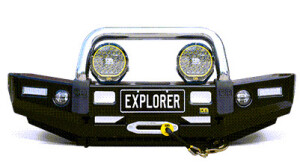
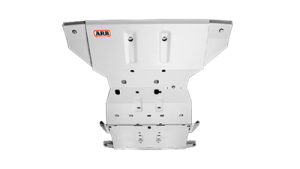
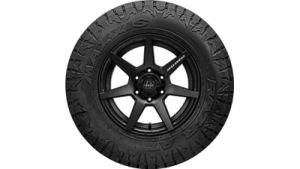
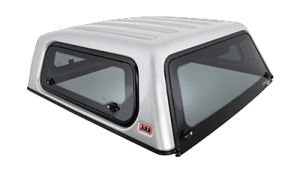

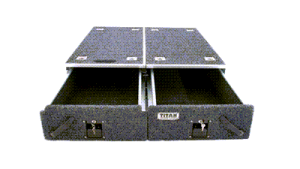
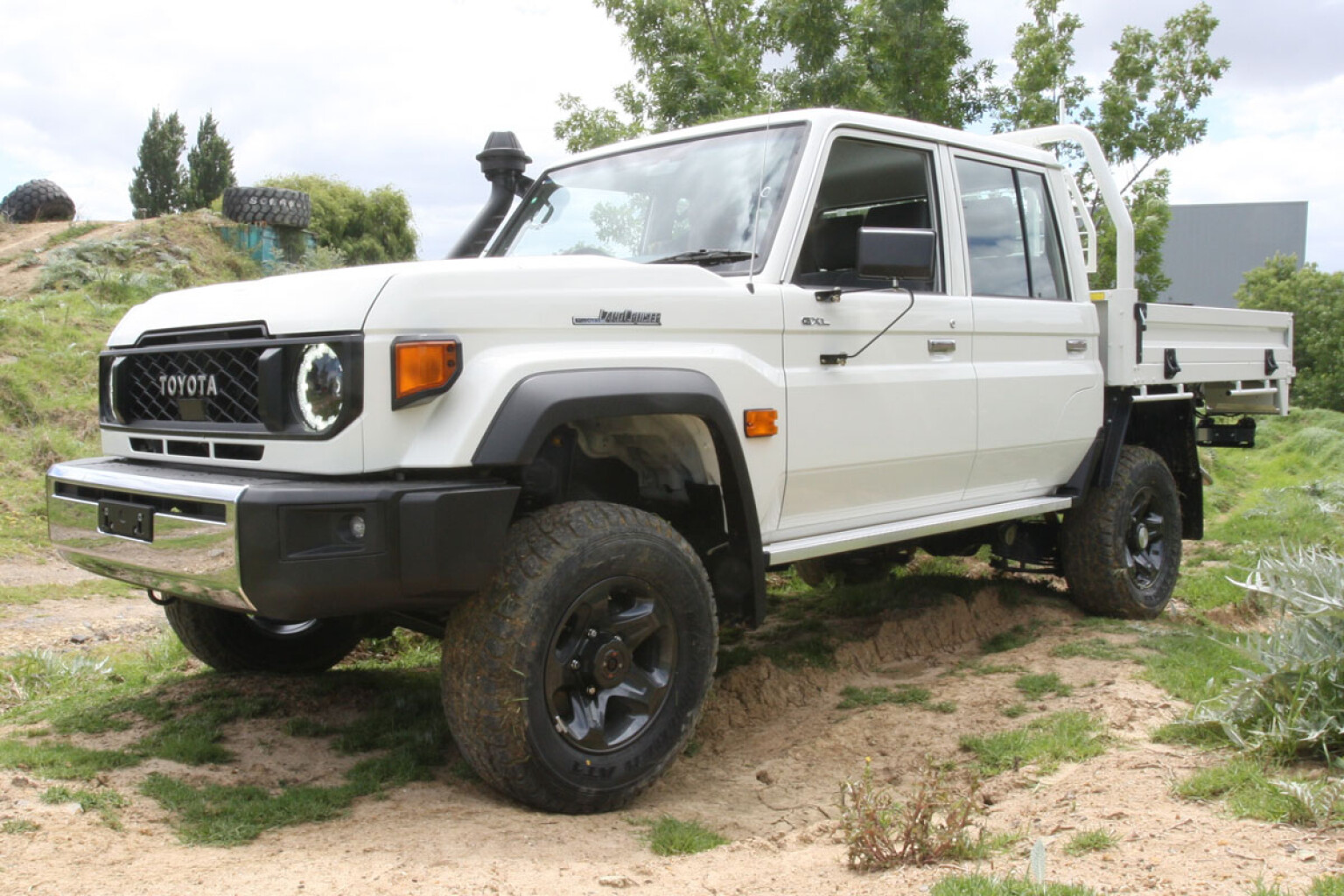
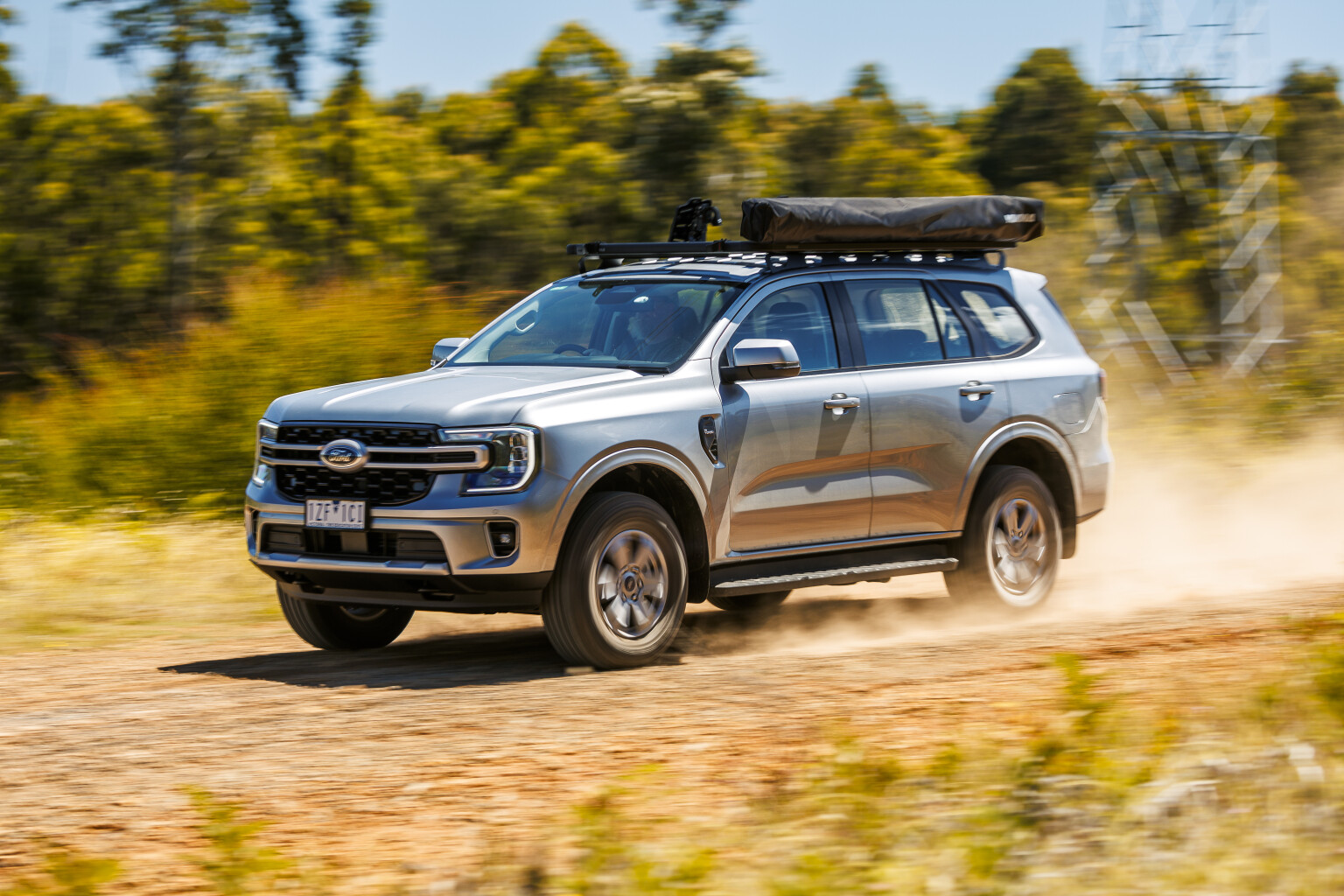
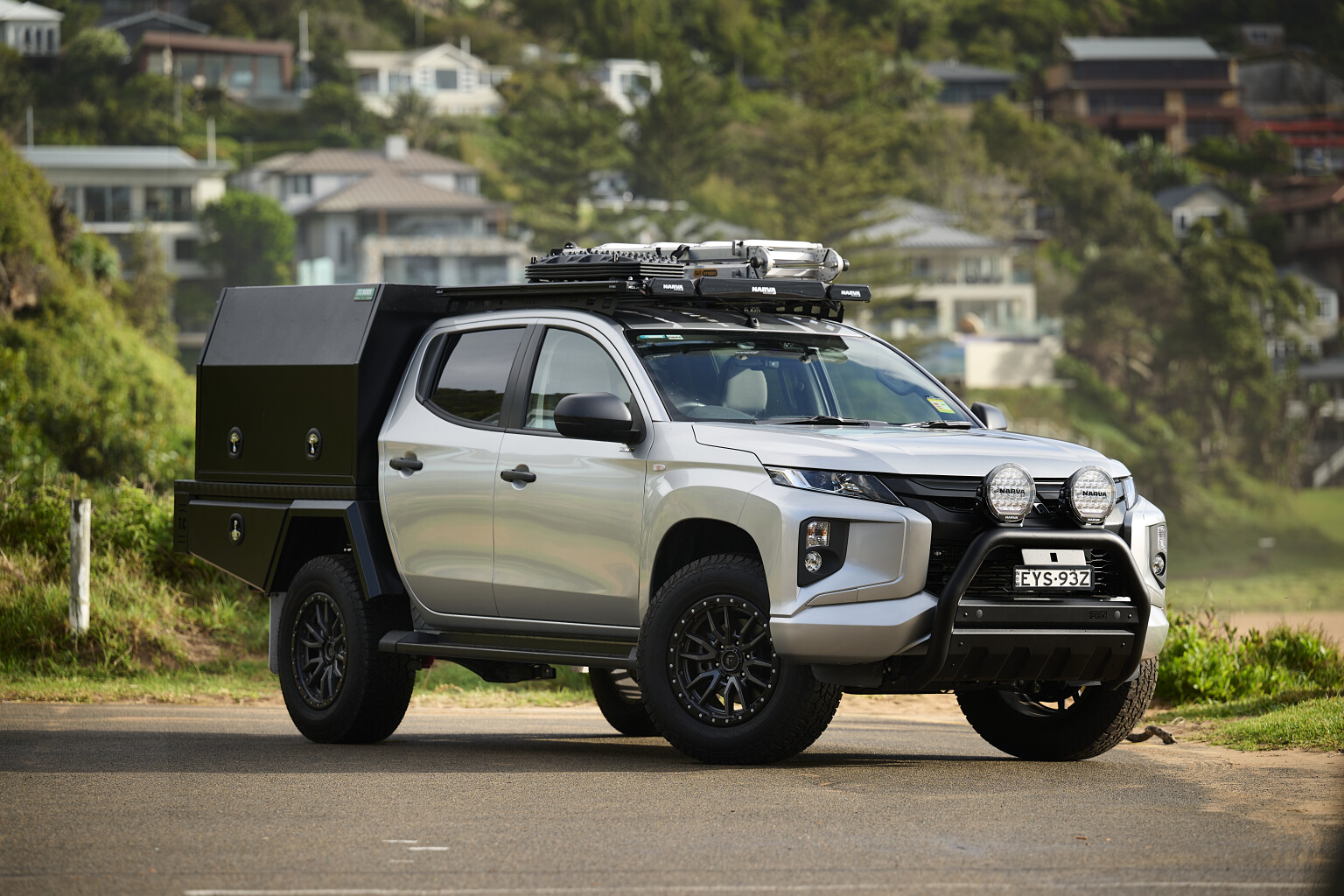
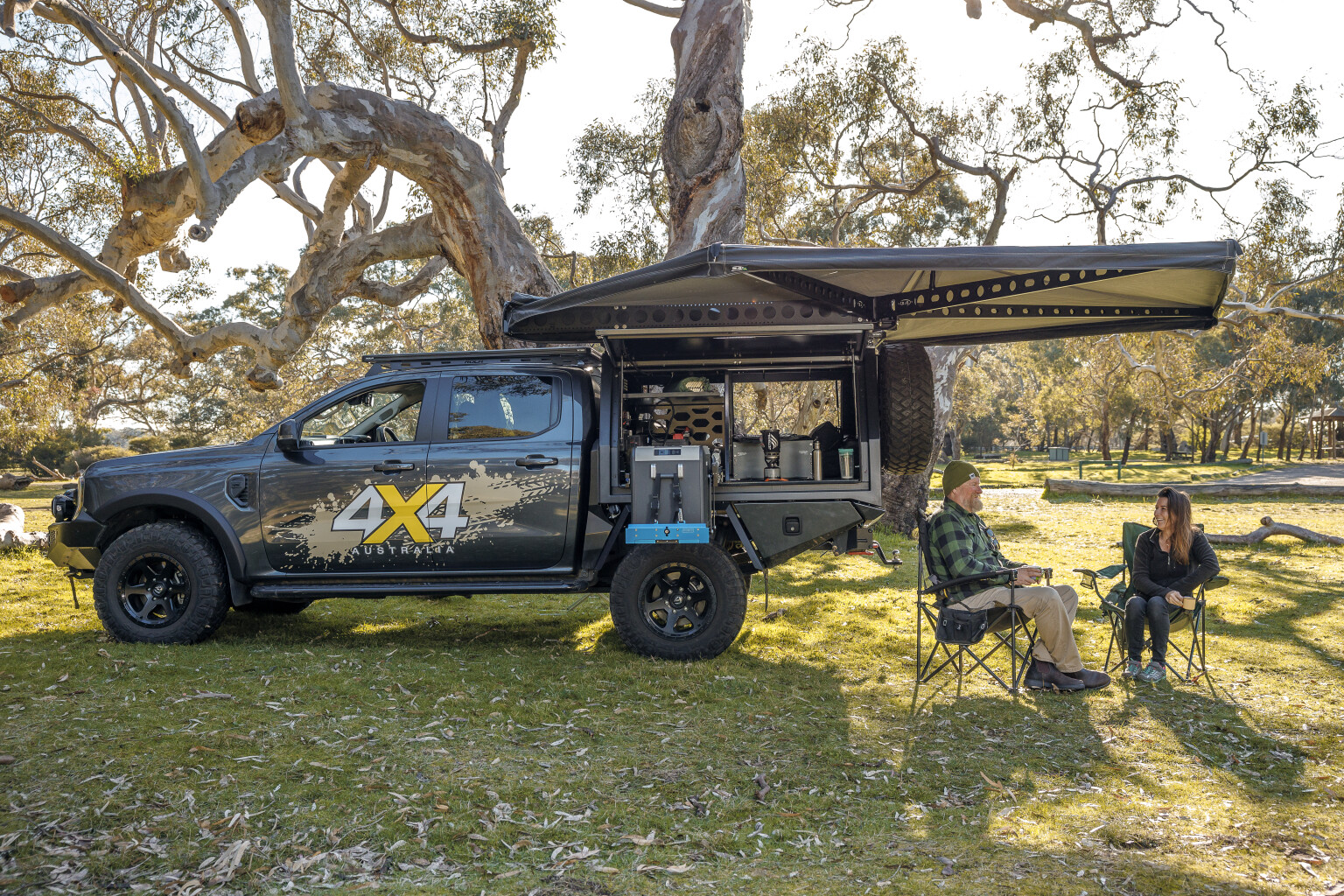

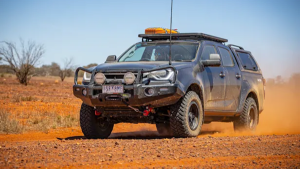

COMMENTS